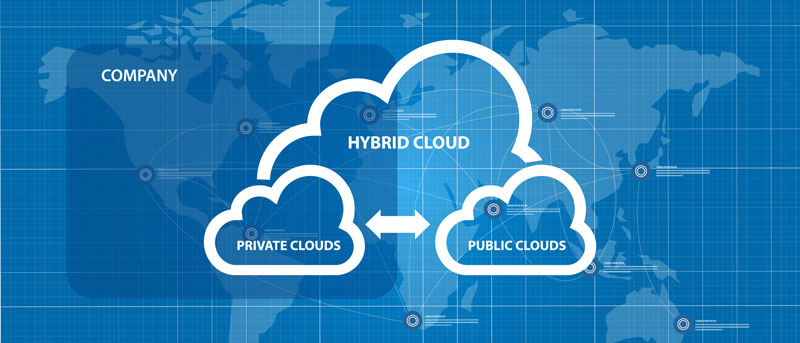Global enterprises see hybrid cloud computing as the ideal IT model. Some say they’ve deployed it. Yet others contend that bona fide hybrid clouds don’t actually exist – at least, not yet.
Nearly all respondents (91%) to the 2018 Enterprise Cloud Index (ECI) global survey conducted by VansonBourne for Nutanix agreed that hybrid cloud computing is their IT model of choice going forward. Hybrids combine on-premises private clouds with public cloud services.
But while a number of companies have deployed both private and public clouds today, a true hybrid environment requires a degree of integration between the infrastructures that hasn’t yet been achieved, said Rajiv Mirani Nutanix CTO of cloud platforms.
“This notion of a true hybrid cloud today just isn't there,” he said.
Currently, hybrid computing is more about “one set of applications running in your private data center and a different set of applications running in the public cloud. There's very little movement or interaction between them,” said Mirani.
That falls short of the ECI survey respondents’ expectations and could be why just 19% of them said they were running hybrid clouds today, despite 91% describing hybrid clouds as ideal. They cited the following capabilities most often as the biggest benefits of hybrid cloud: the flexibility to match each application to the right infrastructure (70%), unified cloud management and operations (66%), the ability to choose the right cost model for each computing workload (62%), and the ability to move applications back and forth between clouds (61%).
For now, however, private and public clouds are separate silos, Mirani said.
“While the public cloud offers a wide range of benefits, you can’t take your legacy applications and just run them there. You have to rewrite them,” he explained.
Mirani said hyperconverged data center infrastructures have been an important step in getting private data centers to look and behave more like the public cloud, so that integration, unified operations, and application mobility can become possible. That’s critical, because 97% of the survey respondents said that application mobility between private and public infrastructures would be necessary for them to derive the full benefit of the hybrid model.
Why is this capability so important?
“Applications evolve,” explained Mirani. “Today, it may be cheaper to run something in the public cloud. As utilization grows, in two years it may make more sense to run that same application in your private data center. If you can't move things back and forth, that's a decision you're locked into very early in the process of deploying an application.”
He predicted, however, that cloud interoperability, orchestration and application mobility will mature in 2019. They’ll have to in order to meet the demand expressed by ECI respondents. Many organizations surveyed plan to more than double their hybrid cloud deployments in the next two years, when hybrid cloud use is expected to reach 41% enterprise market penetration.
Joanie Wexler is a contributing writer and editor with more than 20 years experience covering IT and computer networking technologies.
© 2019 Nutanix, Inc. All rights reserved. For additional legal information, please go here.












